
Sushi Supplies List
Shop All Sushi Supplies
Sushi Equipment
Ensure you have all the equipment necessary to store, make, and display sushi.
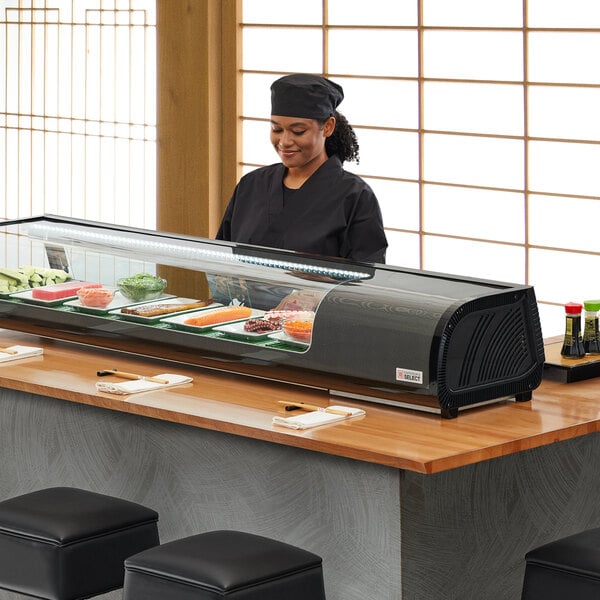
- Rice cooker: Used to cook large batches of rice quickly and easily, rice cookers ensure soft, fluffy rice every time for consistent, great-tasting sushi. Select a rice cooker with a “keep warm” setting to make sure the finished rice stays sushi-ready while you prepare rolls.
- Refrigerated sushi case: Sushi cases can be used to hold your fresh sushi ingredients or can be placed on top of your bar to show off your sushi and sashimi selection.
- Refrigerated prep table: With handy features like drawers and food pan holders to hold ingredients and attached cutting boards, refrigerated prep tables are all-in-one stations that can be a great option for kiosks and back-of-house use.
Sushi Chef Tools
Below you will find the kitchen tools needed when preparing your sushi rolls.
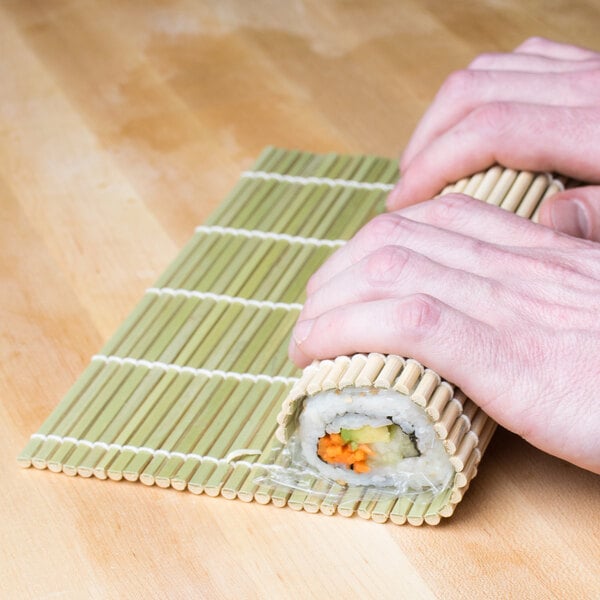
- Sushi rolling mat: Bamboo sushi rolling mats help to maintain even pressure on all sides when rolling sushi to ensure a perfect, round shape.
- Plastic wrap: Use plastic wrap to prevent rice and other ingredients from sticking to the bamboo mat.
- Asian knives: Knives are used throughout the sushi-making process, such as portioning raw fish and other ingredients and slicing the finished roll into pieces. Specialized Japanese cutlery, such as deba, nakiri, sashimi, and santoku knives, are essential to use in your sushi restaurant.
- Cutting board: Slicing and dicing ingredients will be an everyday task at your sushi shop, so it is important to invest in a durable cutting board.
- Food tweezers: Fish bone tweezers gently pry bones out of fish without breaking the tender bone or ruining the filet. Plating tweezers are also great to have on-hand when plating delicate ingredients.
- Squeeze bottle: Finish off sushi rolls by using a squeeze bottle to precisely drizzle sauces.
Sushi Ingredients
Sushi is only as good as the ingredients used, so it is important to choose high-quality products for your menu items. There are several types of sushi, which means that there is virtually an unlimited number of ingredients that can be used to make unique rolls. Below is a list of some foundational ingredients that are used to make sushi.
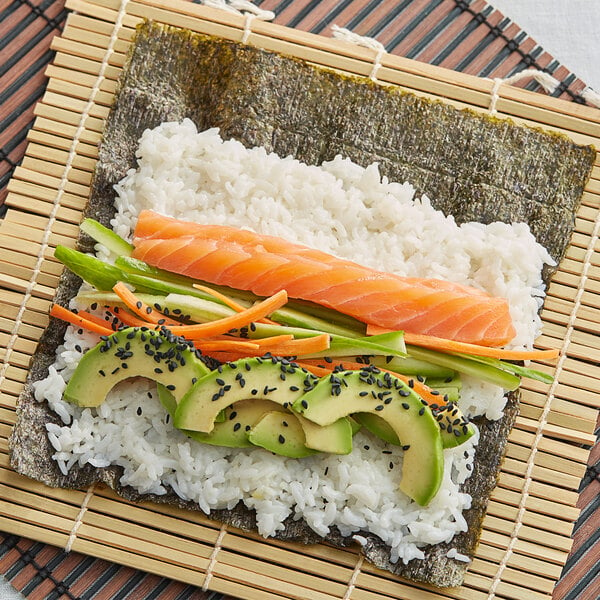
- Sushi-grade fish: Great sushi is dependent upon using high-quality fish and seafood that is suitable for sushi. While "sushi-grade fish" is an unregulated term, it is used by manufacturers to denote that their fish is safe for raw consumption.
- Sushi rice: Short-grain rice is the best rice to use when making sushi. Oftentimes manufacturers will label their rice as “sushi rice” on the packaging to indicate its ideal use.
- Rice vinegar: Classic prepared sushi rice is seasoned using rice vinegar, white sugar, and salt.
- Nori: Nori is a type of edible seaweed that is used for sushi. It helps keep sticky rice, chopped vegetables, and dense slices of fresh fish combined together.
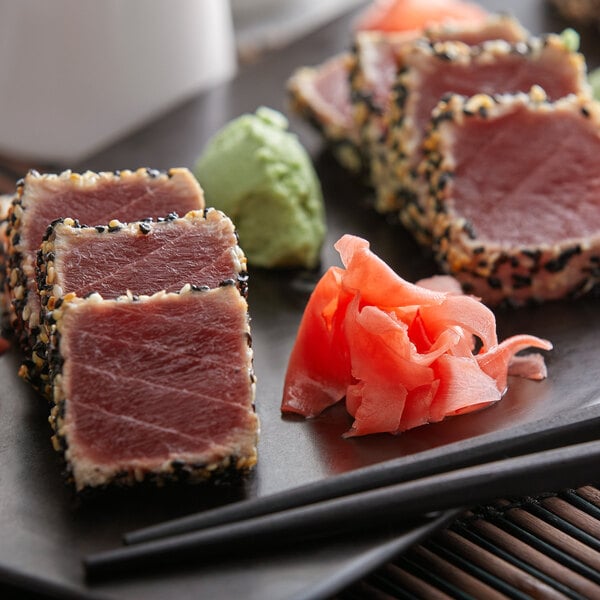
- Sesame seeds: Black sesame seeds have a stronger taste and aroma than white sesame seeds, making them better suited for sushi. While they can be used raw, toasting before use enhances their texture and nutty flavor.
- Soy sauce: Featuring a savory, umami flavor, soy sauce is an essential dipping sauce to provide with your sushi.
- Wasabi: Serve the hot, pungent flavor of wasabi with your signature sushi rolls and sashimi.
- Pickled ginger: Pickled sushi ginger, or gari, has a sour, spicy taste that is great for serving alongside sushi or sashimi as a palate cleanser between rolls.
Sushi Servingware
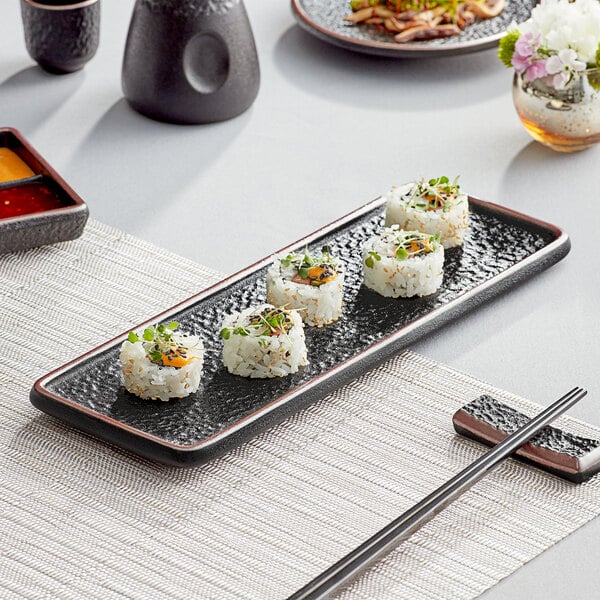
- Sushi plates: Sushi plates feature a flat design to let your sushi rolls standout. Choose from modern, solid-colored plates or plates that feature traditional Asian-inspired graphics.
- Sushi boats: Ensure a memorable experience when serving your sushi on a sushi boat. They are a unique vessel that work well for shared meals.
- Chopsticks: Provide reusable chopsticks for your in-house dining and disposable chopsticks for your take-out service.
- Sushi take-out containers: Sushi containers are ideal for packaging leftovers or merchandising to-go orders.

- Sauce dishes: Providing a dedicated dish for your soy sauce is sure to enhance your customers’ dining experience.
- Soy sauce bottles: Pouring soy sauce into sauce dishes is a quick and easy task with a soy sauce bottle. They come available in a red cap bottle to denote regular soy sauce and a green cap bottle to denote low sodium soy sauce.
- Glassware: Ensure you have all the glassware you need, such as drinking glasses, cocktail glasses, wine glasses, and sake cups, to accommodate your beverage menu.
Related Resources
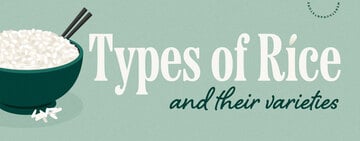
Types of Rice
Rice is a staple in any kitchen, and with so many different types, it lends itself to an endless number of recipes. Each type of rice has its own taste, texture, and unique properties that work best in different applications. Plus, rice is naturally gluten-free, making it an easy way to offer gluten-free entrees to accommodate alternative diets on your menu. This guide examines factors that differentiate types of rice, from nutty basmati to fragrant jasmine, so you can choose the best rice for your next recipe. Shop All Bulk Rice Use the following links to explore the types of rice out there, so you can make more informed purchases for your menu! Different Types of Rice Long vs Short Grain Rice Is Rice a Grain? Rice FAQs Rice Types Chart

Sustainable Seafood for Restaurants
Whether it's related to food sourcing or disposal methods, sustainability has been at the forefront of foodservice trends and concerns in recent years. One of the primary focuses of the sustainability movement is the health of our oceans and marine life. Over 50% of American consumers identified that sustainable seafood is important to them and that they would pay more for it to help the environment. If your seafood restaurant is looking for greener practices , we've collected some seafood sustainability tips that your business can incorporate into your menu this year. Shop All Seafood Click any of the links below to learn more about the sustainable seafood: Sustainability Defined Most Popular Seafood Unsustainable Fishing Methods How to Se

Types of Asian Noodles
You can broadly categorize Asian noodles into three main types: wheat, rice, and glass noodles. However, there is a surplus of subcategories with distinct preparation methods, ingredients, shapes, and sizes. Reducing this dynamic cuisine to three unnuanced categories won't help you navigate the Asian noodle aisle. Our guide to the ten most popular Asian noodles breaks down flavor, texture, and uses so you can find the soft, springy, or slippery Asian noodle that satisfies your needs. Shop All Asian Noodles Types of Noodles with Pictures Browse our list of the top ten types of noodles with pictures so you can identify them when you shop. While China has more indigenous noodles than any other country, noodles are a staple food throughout Asia
- Topics 1346
- Industrial 55
- Troubleshooting Guides 21
- Restaurant Management 128
- Bar Management 55
- Catering Tips 35
- Bakery Management 42
- Food Trucks & Concessions 49
- Advertising & Marketing 37
- Eco-Friendly Tips 11
- Facility Layout & Design 41
- Coffee Shop Tips 28
- Installation & Maintenance 51
- Janitorial & Pest Control 30
- Safety & Sanitation 88
- Startup Tips 104
- Menu Design 10
- Kitchen & Cooking Tips 81
- Hospitality Management 23
- Pizza & Sandwich Shop Tips 36
- Smallwares 37
- Food Prep 88
- Tabletop Items 17
- Disposables 22
- Calculators & Tools 6
- Consumables 52
- Warewashing & Laundry 18
- Cooking Equipment 90
- Food Storage & Refrigeration 51
- Beverage Equipment 34
- Office Supplies 6
- Resource Type
- In-Depth Articles272
- Buying Guides296
- How-Tos93
- Product Reviews77


